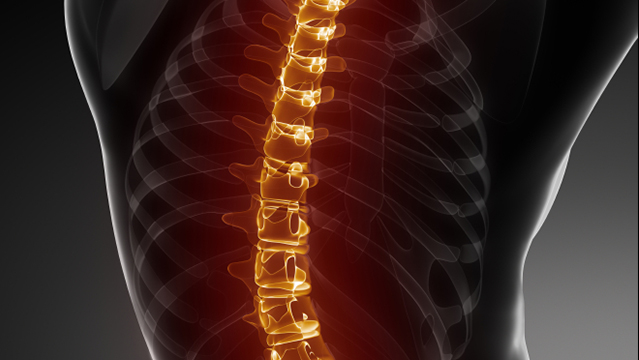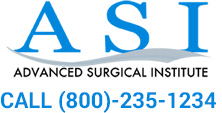
Contact Us
Spine Surgery
Spinal Surgery for Chronic Back Pain in Huntington Beach, California

If you are suffering from chronic back pain then you may require spinal surgery. Whether your pain is a result of aging, trauma, or improper mechanics of the body, spinal surgery can help address these issues.
Am I a Candidate for Spinal Surgery?
Spinal surgery is often only necessary in a small number of patients that suffer from chronic back pain. Oftentimes back pain can be addressed through physical therapy, exercise, weight loss, medication, or other non-surgical options. Some patients, however, will require a surgical procedure to address their back pain.
Some of the instances where spinal surgery may be necessary include:
- The presence of disks in the spine that have ruptured or herniated, or disks that are bulging and are associated with pain.
- Damage to the spinal column that may include fractured vertebrae.
- The presence of the condition known as osteoporosis, the disease of the bones that can result in an increased risk of fracture.
- Persistence of pain despite treatment through non-surgical options.
- Conditions that result in the compression of spinal nerves, resulting in pain and numbness in certain areas of the body including the back and legs.
- Curvature of the spine (scoliosis)
- Narrowed spinal canal caused by spinal stenosis
- Slippage in segments of the spine (spondylolisthesis)
- Deformity such as that resulting in a humpback (kyphosis)
Many other conditions such as radiculopathy and degenerative disk disease may also be treated through spinal surgery.
Spinal Surgery Procedures
Depending on the condition you suffer from it may be necessary to implement a number of different spinal surgery procedures. The most common types of procedures used in spinal surgery include:
- Artificial Disc Implantation – Artificial disc replacement may be used to treat conditions of the neck or lower back. These disc replacements are made of materials that serve the same function as natural discs by relieving pain from a disc while maintaining the natural anatomical structure of the spine and maintaining the shock-absorption qualities of a natural disc. This is often used as an alternative to spinal fusion surgery.
- Spinal Fusion Surgery – Instead of replacing the painful disc it may be necessary to fuse or connect two or more bones in the spine. This surgery results in better stability and reduces pain, especially when in motion.
- Laminectomy – This type of spinal surgery increases the size of the spinal canal by removing the bone that is overlying it. Typically this procedure is performed in order to alleviate or eliminate nerve pressure associated with spinal stenosis.
- Vertebroplasty – Vertebroplasty involves the surgical injection of bone cement into vertebrae that has been compressed. This procedure is often performed in cases where the vertebrae have either been compressed or fractured and causes pain or instability in the spine.
Consulting a Spinal Surgeon
In order to properly treat any of these conditions it is important to consult with a spinal surgeon to find out if spinal surgery is necessary and what procedure will benefit your condition.
SPINAL SURGERY
If you suffer from chronic back and neck pain, each and every day can be a challenge. The life you used to enjoy is restricted by the pain and mental anguish of back or neck disorders. When simple remedies and medications aren’t enough, it might be time to consider surgery. Using advanced procedures, we help people suffering from pain get their life back. Our outpatient procedures are minimally invasive and are designed to shorten the recovery time and to get the relief you need.
Our experienced spinal surgeons can perform the following outpatient spinal surgical procedures:
Lumbar Microdiscectomy
Lumbar microdiscectomy is an operation on the lumbar spine performed using a surgical microscope and microsurgical techniques. A microdiscectomy requires only a very small incision and will remove only that portion of your ruptured disc which is “pinching” one or more spinal nerve roots. The recovery time for this particular surgery is usually much less than is required for traditional lumbar surgery.
Anterior cervical microdiscectomy
Anterior cervical microdiscectomy (ACD) is commonly applied in the surgical treatment of cervical disc herniation.
Ulnar Neurolysis (Cubital Tunnel) Ans
Cubital tunnel syndrome is the common term used for uInar compressive neuropathies at the elbow (from the midarm to the midforearm). UInar entrapment neuropathy develops because of the predisposing anatomy of the elbow region and the biomechanics of the ulnar nerve at the elbow; it is based on compressive, traction, and frictional forces, with the possible association of a nerve at risk.
Spinal Cord Stimulator Implantation
A spinal cord stimulator is a device used to exert pulsed electrical signals to the spinal cord to control chronic pain. Spinal cord stimulation (SCS), in the simplest form, consists of stimulating electrodes, implanted in the epidural space, an electrical pulse generator, implanted in the lower abdominal area or gluteal region, conducting wires connecting the electrodes to the generator, and the generator remote control. SCS has notable analgesic properties and, at the present, is used mostly in the treatment of failed back surgery syndrome, complex regional pain syndrome and refractory pain due to ischemia.
Percutaneous Discectomy
Percutaneous means “through the skin” or using a very small incision. Discectomy is the surgical removal of herniated disc material that presses on a nerve root or the spinal cord.
Percutaneous discectomy is different from conventional open discectomy or microdiscectomy. There are several percutaneous procedures. All of them involve inserting small instruments between the vertebrae and into the middle of the disc. X-ray monitoring is used during surgery to guide the movement of the surgical instruments. The surgeon can remove disc tissue by cutting it out, sucking out the center of the disc, or by using lasers to burn or evaporate the disc. The disc material that has herniated is not directly removed in these operations.













